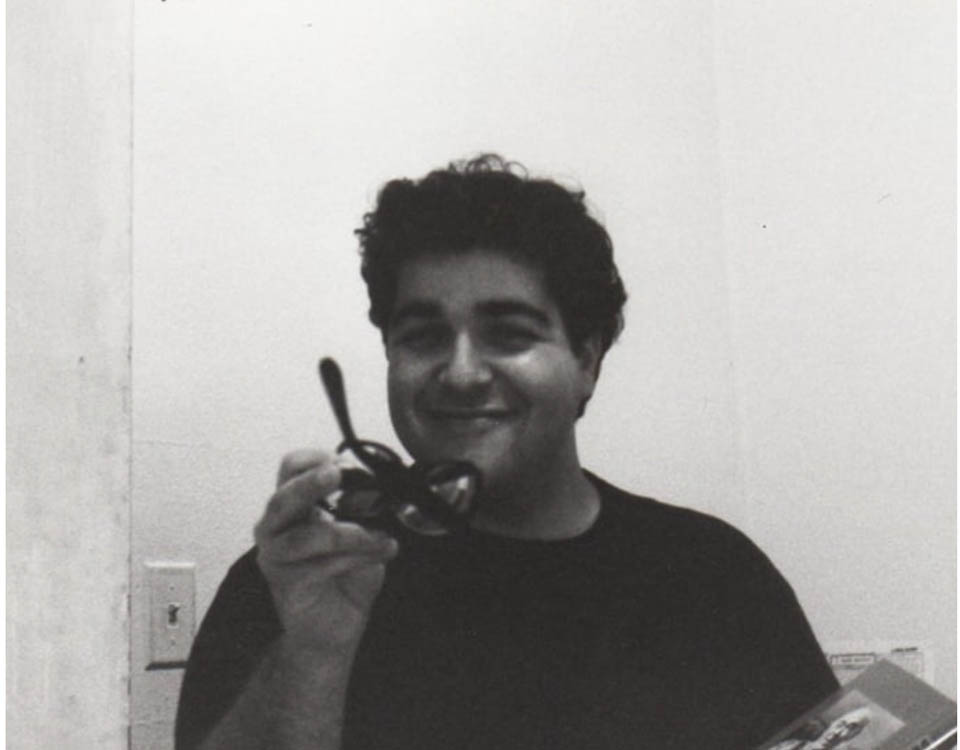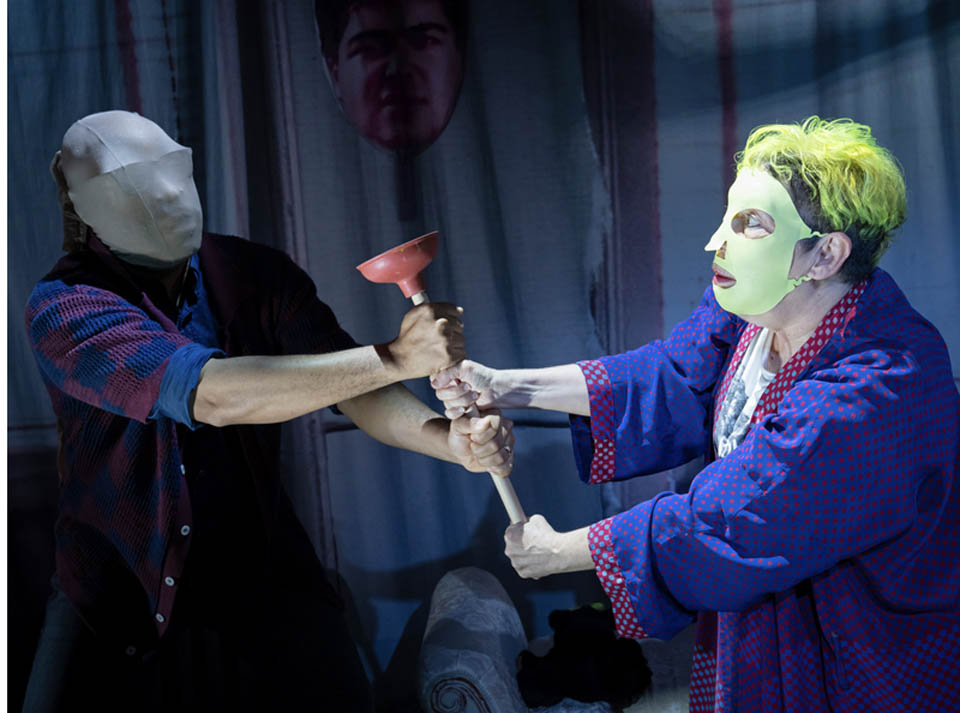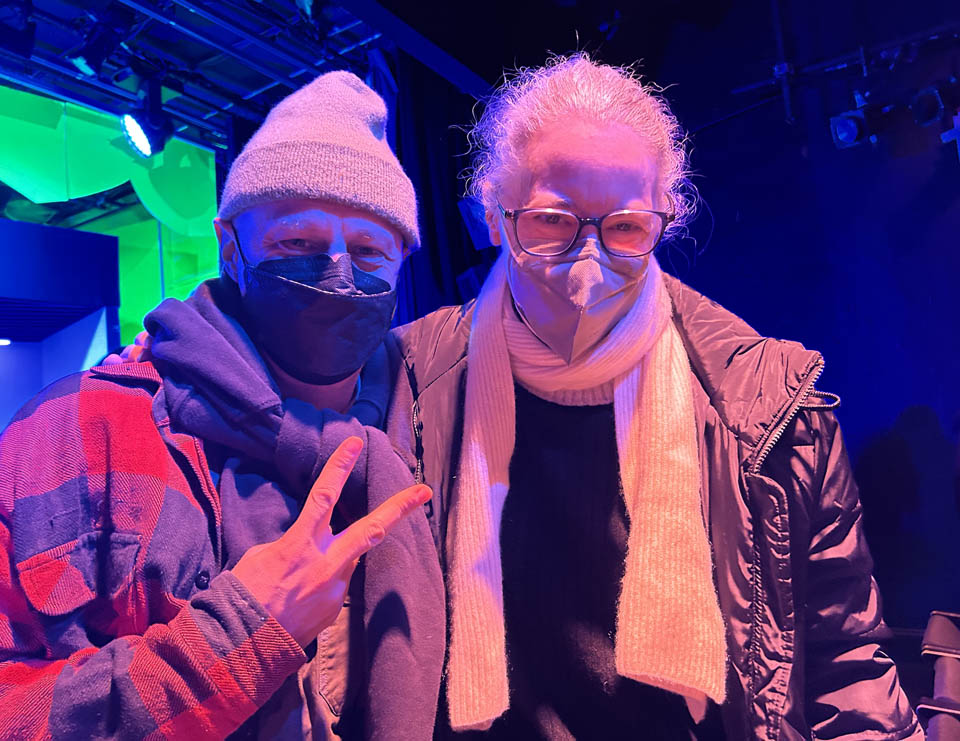At the end of her delightful “crazy avant-garde flashback,” Give Me Carmelita Tropicana, at the Soho Rep, Alina Troyana/Carmelita Tropicana breaks the fourth wall and walks right up to the edge of the audience. I was in the front row with my friend Ted on Sunday. She looked us all over, and said she recognized many of us: several infamous lesbians and also a famous female choreographer apparently also in the front row and just a few seats from me. Titillating! Alina seemed truly happy to see us all, and thanked us for being her audience.
I too, had recognized several people in the crowd, all of whom I know from the AIDS academic/art worlds of NY. And of course I was there with Ted, his Christmas present from me. We wrote a book about the cultural history of AIDS together.1
When Alina and I were younger, The Village was one. We lived, worked, danced, partied, organized, studied, ate, drank, shopped, walked, cruised, had sex, got sick, made art, made friends, saw art, and performance, and movies, and theater, and dance, and many of us died there.2 A cherubic photograph of José Esteban Muñoz (1967-2013) is the only image on the fabric wall of the gloriously make-shift set of Carmelita’s apartment building on Loisaida on the Lower East Side (you can see this version of his sweet face in the promo photo for the performance, the one with the plunger, farther below).

I knew him at that age. Although I was living in Philly and then LA when he truly ruled the streets, bars, clubs, and classrooms of The Village, I would visit him downtown when I was in town. Although he did not die of AIDS, his loss, and that of many gay male artists, activists, and academics, frames this show about these and many other disappearances (perhaps most critically, the forfeiture of performance art and its downtown venues and scenes. This stunning practice is what José wrote and taught about with so much precociousness and clarity, including the oeuvre of Carmelita.3 This play also honors Jack Smith [1932-1989] who Carmelita surfaces in its conclusion, more about this in mine.)
When I lived in The Village in the 1980s, people would say they never went above 14th Street or below Canal. Sure, we might dip our toe into quickly gentrifying Tribeca, and gay men went to Chelsea. But otherwise, in our Village (and this Village was always changing, differently available to those who lived there over its many decades of excellence), we would live our whole life. There was such great pleasure, and often annoyance, of always running into people you knew—from ACT UP, or from school, or clubbing, or your video rental store—whenever you went to or did anything. Club kids would go to the restaurant where you worked, and you would give them free drinks, and they would give you a flier letting you in for free to a club. Artists would grace each others shows as audience and then reciprocate. All of this was downtown.
This (changing) scene, haunted by loss and death from AIDS, and much more, was the subject of a shared media geneology of the neighborhood, “Downtown’s Queer Asides,” that I organized and co-wrote with Lucas Hildebrand, Debra Levine, and Ricardo Montez, one of many inter-generational queer associations that will grace this page, and which is another subject of Carmelita’s co-written play (with Branden Jacobs-Jenkins).
Downtown mapped in this conversation is one actively produced and recreated according
to our individual stakes and experiences. Yet, these individual constructions of Downtown
reflect not just singular fantasy but an ever-changing psychic geography that is all about
contact and exchange. –Ricardo Montez4
Ricardo was sitting right behind me and Ted at Carmelita’s performance.
Give Me Carmelita Tropicana is well worth the visit. It is up for one more week in this small and slightly retro venue. It is a smart and charming rollercoaster ride of trippy, campy, seams-showing, self-reflexive fun. But, as is true for everything I’ve written in the past three weeks on this reanimated blog, I will not be writing a review, as such. Rather, I am putting myself into audiences (and community, and groups), with some intention, to think about how I can be fed and learn by being with others in the interval between election and inauguration. Then I have to blog about it, quickly (by this I mean the turnaround time; these take hours to write), as a focused, careful act of attention: the reciprocal labor of the critic, or audience-member, thereby taking on her share of the work of mutual respect and care that very small villages demand, and receiving more in kind (this, too, ends this post).
An audience is a community, when it is in/a village. When going and showing allows for known encounters in a charged scene of recognition, respect, and attention. This has almost nothing to do with how that happens online. Neither the internet, nor social media, can not be a village because they pretend to be universal, they are built on this and other deceptions and misrecognitions, they are porous and leaky while striving to balloon, and they are built on roads and with enclosures by and for capital.
Of course, what The Village is now is another matter altogether. Jeremiah Moss’ stunning COVID novel, Feral City, like Give Me, maps and mourns (and refinds for a moment in COVID lockdown) the Village’s intimacy by way of its inevitable and ongoing transformation via gentrification and mediatization. Where it was once an avant-garde audience for the performances of misfits, queers, and deviants, the Village today is more akin to our imaginary social media “Audience,” generic places with teeming crowds exactly like every other. Consumption, capital, superficial gestures of style, ceaseless display of taste, and requisite self-branding organize the lived experience of these cookie-cutter “villages.”
Give Me Carmelita Tropicana uses the sale of Alina’s “brand” (the IP of her alter-ego Carmelita) to her more au courant mentee and one-time Performance Studies student, Branden, an actual success in Uptown theater (Broadway not Harlem), as one avenue to say and lament as much, although the play’s zany edges, and delightful off-ramps to the surreal, keep nostalgia or even too much hand-wringing at bay. The two writers/characters of/in the play speculate that downtown performance art, a la Carmelita, Alina, and José—self-knowing, avant-garde, overly-intellectual; high-brow, ribald, degenerate—must mainstream, as does all culture today: grow an audience and lose knowing who is there, for you, with care (and more, see the conclusion).
Both Carmelita and her cross-generational, queer of color, co-writer Branden, played by Ugo Chukwu, break the fourth wall at the lengthy play’s end: telling us what all the mayhem has been about from their distinct perspectives. And it is in these monologues where something I have been seeking with my madcap attendance (since the election) to scores of events—artistic, political, social, healing—was gently, carefully, and graciously given to the audience.
At the play’s conclusion, Carmelita/Alina quotes from José. The words written on a 3-5 card are from his writing on utopia.5 She breaks the theater’s fourth wall to preach. She acknowledges that we are in this audience in this theater in this interval: one we all know is leading to the further and future destruction of villages, people, laws, and hearts. Then, she tells us about how she saw the outrageous, gay filmmaker and performance artist, Jack Smith, in some seedy downtown venue in the early 80s, in an audience of eight (self-knowing laugh-line). She was galvanized, transported into the long and storied career (now for sale!) as a downtown artist herself. Jack Smith taught her to see how performance art turns everyday objects (a toilet plunger) into tools of power (a weapon with which to vanquish), and everyday artists into warriors.

Alina needs us to know that this is more than merely “the magic of theater.” From the intimate, renegade, desperate, and connected audiences of downtown performance José first learns, and then schools us and her, to understand that our dreams of the future, imagined together, and seen first as art (or theory, or teaching) will be vital.
Some will say that all we have are the pleasures of this moment, but we must never settle for that minimal transport; we must dream and enact new and better pleasures, other ways of being in the world, and ultimately new worlds. — José Munoz
Going there to be and see each other in a small audience is a goodness. It is another way of “being in the world,” an act of solidarity, care, community, and respect. Our Villages will be part of how we see and save each other. But we must dream beyond minimal transport (the delight of the night) to better see and then name the tools of our own power.

- Juhasz and Kerr, We Are Having this Conversation Now: The Times of AIDS Cultural Production (Duke University Press, 2020). ↩︎
- Ira Sachs’ gorgeous, haunting short film, Last Address, visits the homes of some of the many “downtown” artists, who died of AIDS. Their loss, and how they are woven into those streets, builds across this quiet meditation. Alex Fiahlo, with Visual AIDS, has led “Last Address Tribute Walks” in many neighborhoods in the Village, those that abut it, and then up to Harlem. Of course, artists died of AIDS across this city. ↩︎
- Jose Munoz, Disidentifications: Queers of Color and the Performance of Politics (University of Minnesota Press, 1999).( ↩︎
- “Downtown’s Queer Asides,” ed. Joan Hawkins, Downtown Film and TV Culture, 1975-2001 (Intellect Books, 2015). ↩︎
- José Munoz, Cruising Utopia (New York University Press, 2009). ↩︎
Comments
One response to “the audience as village”
[…] of Soho, just below Canal. And though I previously had written, also about this show, that I never left The Village in the 80s, this wasn’t really true. Soho Rep, where we had just seen Give Me Carmelita […]